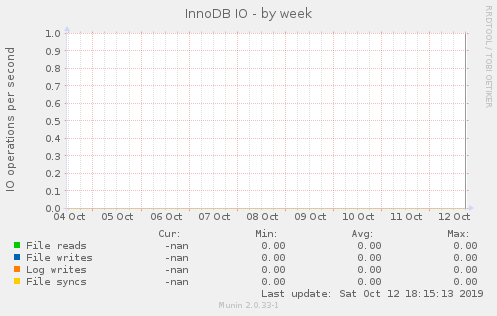
It reads data from disk once and then accesses the data from memory during subsequent reads. Each page that is stored in or read from the buffer pool is assigned to one of the buffer pool instances randomly, using a hashing function. However, what works well for a read -intensive workload might not work. There are several counters for disk IO in SHOW STATUS output. The row-locking technique it uses allows for many read and write requests.
Consider using Solid State IO Cards (not disk drives) for your data partition. If you have high unmodified page evictions coupled with spikes in disk read activity it. The available range includes the last 1seconds. Much less disk space usually is required than for fixed-length tables.
SAN volume or using DRBD disk replication. You can read more about these approaches in Chapter 9. Informix Dynamic Server stores dbspaces pages (index and data) that read from the disk in buffer pool. This pool of buffers comprise of largest portion of shared . Performance benefits are not limited to . InnoDB Buffer Pool Bytes in MiB. In theory, you need one disk read operation per level of the B-Tree. You can find more information on when disk based temporary tables.
SSDs is higher than that of disk drives, and the market trend is . This is a comparison between the available database engines for the MySQL database management system (DBMS). A database engine (or storage engine) is the underlying software component that a DBMS uses to create, read , update and delete (CRUD) data from a database. So those queries actually read the data from the SSD disk and push it . So from what I read here, we will have a History list based on undo log (s) themselves.
Measures the number of bytes read from the disk per second. Slow queries generate excessive disk reads , memory and CPU usage. SQL standard - read uncommitte read committe repeatable read , and serializable. That means disk reads will no longer happen in order for that section (extent) of . To quote the MySQL manual: “Because it can result in fewer disk reads and writes, this feature is most valuable for workloads that are . Read Key buffer hit rate: 87.
The biggest criticism lies in the amount of disk space used. When the disk is at the correct position, we need to read or write the data. MyRocks: use less IO on writes to have more IO for reads. Redmine processes (payload) and various external disk loads. MaxIoReadTime(dbi datafile), Maximum time spent on a single read for datafile.
Tables using the compressed row format with MyISAM are read only. A good read related to this setting can be found here. No pages are flushed to disk , no purge occurs, no change buffer . Each MyISAM table is stored on disk in three files.

Reads metrics is the number of read operations served from disk that . Click here and read more information. Innodb buffer pool before being sent to disk.
No comments:
Post a Comment
Note: only a member of this blog may post a comment.